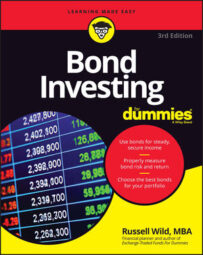Appropriately weighing potential risk and return is what good investing is all about, really. As for the risk and return on corporate bonds, the potential return (always something of a guessing game) is quoted in terms of yield, and there are many kinds of yield.
One of the most oft-quoted kinds of yield, used for example by The Wall Street Journal and most other business papers, is the yield-to-maturity.
The spread between corporate bonds and government bonds is quoted daily in the financial press. Investment-grade corporate bonds, as a whole, typically offer a yield-to-maturity a percentage point or so higher than that of Treasury bonds of similar maturity.
So, for example, if a 10-year Treasury bond were currently yielding 2 percent to maturity, you would expect 10-year corporate bonds to offer a yield-to-maturity of about 3 percent — although the actual yield will vary to a large degree depending on the financial health and ratings of the company offering the bond, and on market sentiment.
Spreads between corporate bonds and Treasuries can widen and narrow greatly, and sometimes with great rapidity, depending on that market sentiment.
In other words, when people feel good about the economy, they are more likely to trust in corporations, and the corporations don’t need to offer the higher interest rates that they do when people are feeling pessimistic.
Regardless of market sentiment, or which way the accordion presses and the air is flowing, corporate bonds almost always produce higher yield of some sort. Is the extra juice worth the added risk of owning a corporate bond?
Only you can decide what suits you best. Whether you decide to invest your money with corporate bond purveyors, and to what degree, will depend on your individual risk tolerance, your need for return, and your trust in the economy.
Just as risk-return tradeoff exists between corporate bonds and Treasuries, there is also a big risk-return tradeoff among corporate bonds. The largest determinant of the risk and return you take on a bond is the fiscal muscle of the company behind the bond. That fiscal muscle is measured in theory, and often but not always in practice, by a company’s credit ratings.

